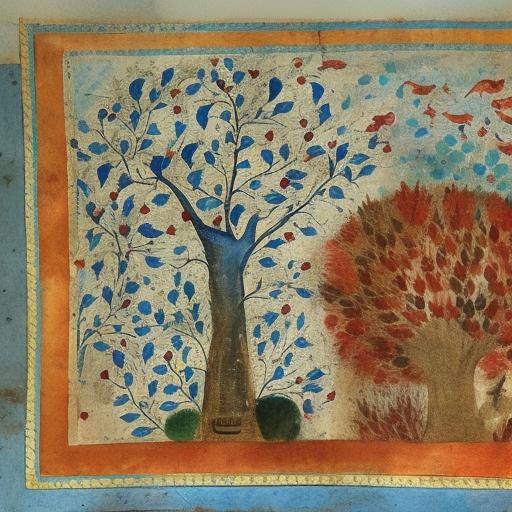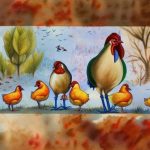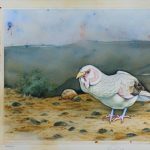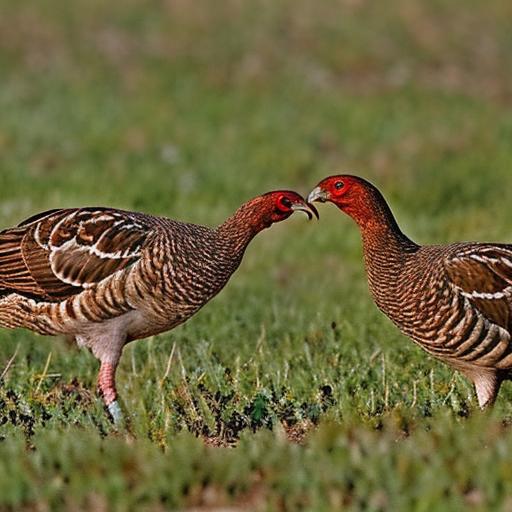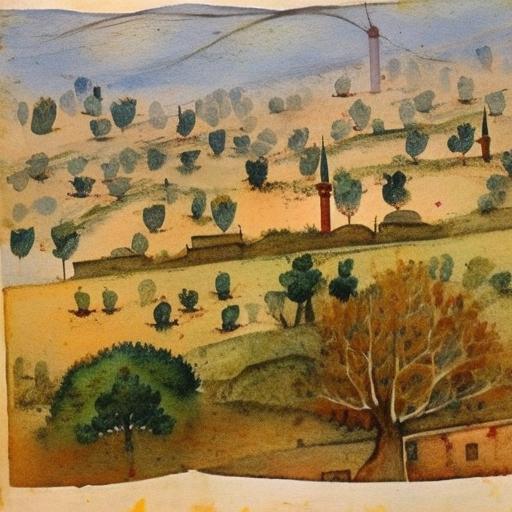Turkey breeding season typically occurs in the spring, with the peak of mating activity taking place in April and May. During this time, male turkeys, also known as toms or gobblers, become more vocal and display aggressive behavior as they compete for the attention of female turkeys, or hens. The breeding season is a crucial time for the continuation of the turkey population, as it is when the hens lay their eggs and the males fertilize them. Understanding the timing and behaviors associated with turkey breeding season is essential for wildlife management and conservation efforts.
During the breeding season, male turkeys will often puff out their feathers, fan their tails, and strut around in an elaborate display to attract the attention of the hens. This behavior is known as strutting, and it is a key part of the courtship ritual. The toms will also gobble loudly to announce their presence and establish their territory. Meanwhile, the hens will be actively seeking out suitable nesting sites and preparing to lay their eggs. Understanding these behaviors and the timing of the breeding season is important for researchers and wildlife managers who are working to monitor and protect turkey populations.
Key Takeaways
- Turkey breeding season typically occurs in the spring and early summer, when the days are longer and the weather is warmer.
- The significance of turkey breeding season lies in the continuation of the species and the production of new offspring to maintain the population.
- Factors influencing turkey breeding season include daylight length, temperature, and food availability, which can affect the timing and success of breeding.
- Behavioral changes during turkey breeding season include courtship displays, mating rituals, and territorial behavior as turkeys compete for mates.
- Turkeys employ reproductive strategies such as nesting in hidden locations, laying multiple eggs, and relying on camouflage to protect their offspring.
- Human impact on turkey breeding season can include habitat destruction, hunting, and disturbance, which can disrupt the natural breeding process.
- Conservation efforts during turkey breeding season may involve habitat preservation, predator control, and regulated hunting to support healthy turkey populations.
The Significance of Turkey Breeding Season
The breeding season is a critical time for turkey populations, as it is when the next generation of turkeys is produced. The timing of the breeding season can have significant impacts on the success of turkey reproduction and the overall health of the population. A successful breeding season can lead to an increase in turkey numbers, while a poor breeding season can result in a decline in population size. This makes understanding and monitoring the breeding season essential for wildlife managers and conservationists.
The breeding season also plays a crucial role in maintaining genetic diversity within turkey populations. During this time, male turkeys will compete for mates, and the most dominant males will have the greatest opportunity to pass on their genes to the next generation. This natural selection process helps to ensure that the strongest and healthiest genes are passed on, which is important for maintaining a healthy and resilient turkey population. Additionally, the timing of the breeding season can be influenced by environmental factors such as temperature and food availability, making it an important indicator of ecosystem health.
Factors Influencing Turkey Breeding Season
Several factors can influence the timing and success of turkey breeding season. One of the most significant factors is photoperiod, or the length of daylight. As the days grow longer in the spring, it triggers hormonal changes in turkeys that signal the start of the breeding season. Temperature can also play a role, as warmer weather can lead to earlier nesting and hatching of eggs. Food availability is another important factor, as hens need to be in good physical condition in order to produce healthy eggs.
Habitat quality and availability can also influence turkey breeding season. Turkeys require suitable nesting sites with adequate cover and protection from predators. Loss of habitat due to development or deforestation can impact the availability of nesting sites, leading to decreased reproductive success. Additionally, human disturbance can disrupt turkey breeding behaviors, causing stress and potentially impacting reproductive success. Understanding these factors and their impacts on turkey breeding season is essential for effective wildlife management and conservation efforts.
Behavioral Changes During Turkey Breeding Season
During the breeding season, both male and female turkeys exhibit significant behavioral changes as they engage in courtship rituals and prepare for reproduction. Male turkeys become more vocal and display aggressive behaviors as they compete for mates. They will strut, fan their tails, and gobble loudly to attract the attention of hens. The most dominant males will establish territories and defend them from other males in order to increase their chances of mating with multiple females.
Female turkeys also undergo behavioral changes during the breeding season. They will actively seek out suitable nesting sites and prepare to lay their eggs. Once they have laid their eggs, they will diligently incubate them and protect them from predators. During this time, hens may become more secretive and less visible as they focus on caring for their eggs. Understanding these behavioral changes is important for researchers and wildlife managers who are working to monitor and protect turkey populations.
Reproductive Strategies of Turkeys
Turkeys employ several reproductive strategies to increase their chances of successfully producing offspring. One such strategy is polygyny, where dominant males will mate with multiple females in order to maximize their reproductive success. This can lead to competition among males for access to females, resulting in elaborate courtship displays and aggressive behaviors. The most dominant males will have the greatest opportunity to pass on their genes to the next generation.
Another reproductive strategy employed by turkeys is synchronous nesting, where hens in a given area will lay their eggs at roughly the same time. This can help to reduce predation risk, as there is safety in numbers when it comes to protecting nests and young chicks. Additionally, turkeys may exhibit brood parasitism, where one hen will lay her eggs in another hen’s nest in order to increase her own reproductive success. Understanding these reproductive strategies is important for researchers and wildlife managers who are working to monitor and protect turkey populations.
Human Impact on Turkey Breeding Season

Human activities can have significant impacts on turkey breeding season and reproductive success. Habitat loss due to development or deforestation can reduce the availability of suitable nesting sites for turkeys, leading to decreased reproductive success. Fragmentation of habitat can also isolate turkey populations, making it more difficult for individuals to find mates and leading to decreased genetic diversity.
Human disturbance can also disrupt turkey breeding behaviors, causing stress and potentially impacting reproductive success. Activities such as off-road vehicle use, hunting, and recreational shooting can disturb turkeys and disrupt their courtship rituals. Additionally, pollution and climate change can impact food availability and habitat quality for turkeys, further impacting their reproductive success. Understanding these human impacts is essential for developing effective conservation strategies to protect turkey populations.
Conservation Efforts During Turkey Breeding Season
Conservation efforts during turkey breeding season focus on protecting habitat, reducing human disturbance, and monitoring population health. Protecting and restoring habitat is crucial for providing turkeys with suitable nesting sites and food sources. This may involve land acquisition for conservation purposes, habitat restoration projects, and working with landowners to implement sustainable land management practices.
Reducing human disturbance during the breeding season is also important for protecting turkey populations. This may involve implementing regulations to limit hunting or recreational activities during key times of the year when turkeys are breeding and nesting. Education and outreach efforts can also help to raise awareness about the importance of protecting turkey breeding habitats.
Monitoring population health through surveys and research is essential for understanding the impacts of human activities on turkey populations and identifying areas in need of conservation action. By collecting data on population size, reproductive success, and genetic diversity, researchers can develop targeted conservation strategies to protect turkey populations during the breeding season and beyond. Overall, conservation efforts during turkey breeding season are essential for ensuring the long-term health and sustainability of turkey populations.
As the turkey breeding season approaches, it’s essential to understand the specific needs of these birds. In a recent article on PoultryWizard, the importance of providing a suitable coop for turkeys is highlighted. The article, “Do Turkeys Need a Coop?,” delves into the various considerations for housing turkeys and how a well-designed coop can contribute to their health and well-being. Understanding the unique requirements of turkeys during breeding season is crucial, and this article offers valuable insights for poultry enthusiasts.
FAQs
What is the turkey breeding season called?
The turkey breeding season is commonly referred to as the “mating season” or “breeding season.”
When does the turkey breeding season typically occur?
The turkey breeding season usually takes place in the spring, typically from March to May, when the days are longer and the weather is warmer.
What behaviors are associated with the turkey breeding season?
During the breeding season, male turkeys, known as toms, display aggressive behaviors such as strutting, gobbling, and fighting to establish dominance and attract females, known as hens.
How long does the turkey breeding season last?
The turkey breeding season can last for several weeks, during which time the toms actively court the hens and mating occurs.
What is the significance of the turkey breeding season?
The turkey breeding season is crucial for the continuation of the species, as it is the time when mating and egg-laying occur, leading to the hatching of new turkey poults.
Meet Walter, the feathered-friend fanatic of Florida! Nestled in the sunshine state, Walter struts through life with his feathered companions, clucking his way to happiness. With a coop that’s fancier than a five-star hotel, he’s the Don Juan of the chicken world. When he’s not teaching his hens to do the cha-cha, you’ll find him in a heated debate with his prized rooster, Sir Clucks-a-Lot. Walter’s poultry passion is no yolk; he’s the sunny-side-up guy you never knew you needed in your flock of friends!

